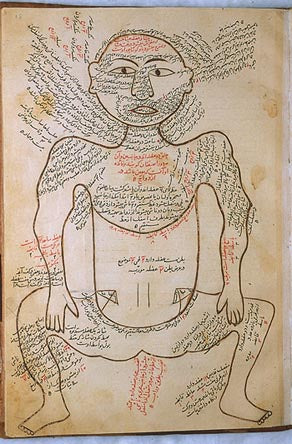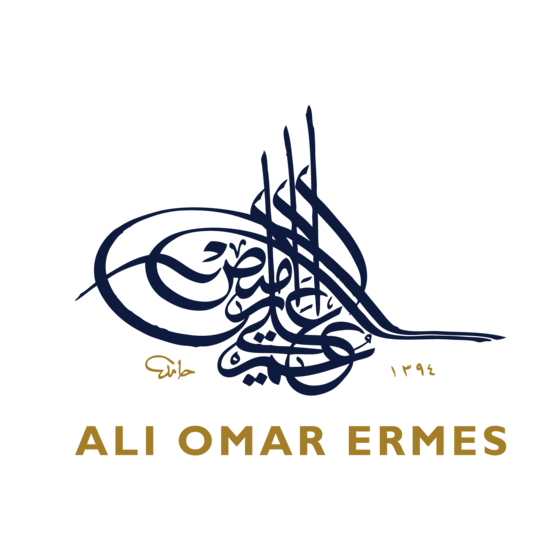The Great Explorers of Islam
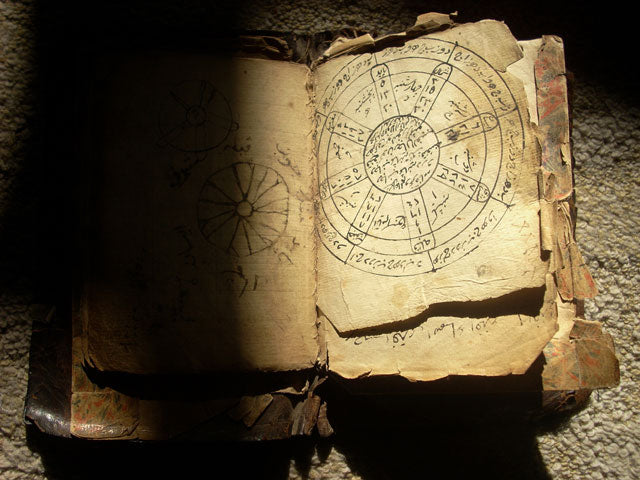
The Islamic Scholar, Sunday 1 February 2004
Arabia being a barren peninsula, its inhabitants had always to depend on foreign supplies for the necessities of life, hence they had to undertake trips to distant countries like Egypt, Abbysinia, Syria, Persia and Iraq.
It was an Arab caravan which brought Hazrat Yusuf (Prophet Joseph) to Egypt. Moreover, the fertile areas in Arabia including Yemen, Yamama, Oman, Bahrein and Hadari-Maut were situated on the coast, and the Arabs being sea-faring people took sea routes in order to reach these places and fulfilling their commercial ventures.
The birth of Islam opened a new vista for their enterprises and the vast conquests of the Arabs during the early decade of Islamic history served as a fresh stimulus to their adventurous spirits. The stories of the famous Arabian Nights including the one about Sindbad the Sailor, give a glimpse of the adventures of those fearless Arabs. It provides a slightly coloured account of the great voyages undertaken by Arab mariners as early as the 1st century A.H., and who, undaunted by the perils enroute, roamed about in stormy seas reaching such distant lands as Ceylon, Zanzibar, Maldives, Malaya, Java and Sumatra.
The Haj or the holy pilgrimage to Mecca was another factor which added to their geographical and commercial knowledge by providing social contacts among the Muslims of various countries visiting Mecca every year. This pilgrimage provided not only the means for promoting religious unity but also contributed to strengthening the commercial ties among Muslim countries and led to the exchange of views and news among people of far-flung countries. In fact the Haj, which created an opportunity for a great international assembly each year, has paved the way for Muslim commercial and geographical enterprises.
The invention of mariner’s compass opened vast oceans for their enterprising voyages. Most European writers have credited the Chinese with inventing the mariner’s compass, but according to the famous Orientalist George Sarton, the Arabs were the first to make practical use of it, a fact which has been admitted by the Chinese themselves. Another celebrated Orientalist, Philip K. Hitti, has endorsed the view expressed by George Sarton. “According to a statement of Sir R. F. Burton, it even seems that Ibn Majid was venerated in the past century on the African coast as the inventor of the compass”. l Any way, the practical use of the compass has immensely contributed to the undertaking of distant voyages by Arab sailors, who had hitherto been confined to coastal trips. They now came out into the open ocean and roamed about in the Atlantic as well as in the Pacific, circled the African continent and touched even the shores of the New World. The frail boats were replaced by larger sailing ships and Arabs with the help of compass and other marine instruments braved the stormy seas.

The golden period of Muslim geography, travels and explorations runs from the 9th to the 14th century A.D., in which a vast amount of travel and geographical literature was produced in the world of Islam, which ultimately paved the way for later explorations and discoveries by the Christian West. Writing in the Legacy of Islam J. H. Kramers says, “Europe ought to look upon them (Muslims) as its cultural ancestors in the domain of geographical knowledge of discovery and of world trade. The influence which Islam has exercised on our modern civilization in the spheres of action can be seen in the many terms of Arabic origin which are to be found in the vocabulary of trade and navigation. The measure of influence can only be proved by studying the historical development of the domain over which our actual geographical knowledge extends”.’
Theorists
The works of Greek writers specially the Almagest, written by Ptolemy provided the starting ground for Arab geographers. Al-Khwarizmi, the eminent Arab scientist, who flourished during the reign of the celebrated Mamun-ar-Rashid incorporated some of the ideas of Almagest in his geographical treatise Kitab Surat aL-arz. The book which has been preserved in Strassburg was edited along with a Latin translation by Nallino.
The simple geographical descriptions of numerous countries including their physical features, climatic conditions and the life of the people formed the subject matter of treatises compiled by early Muslim geographers. Ibn Khurdabaih wrote Kitabal-Masaalikwal-Mamaalik; Al-Yaqubi compiled Kitab al-Buldan; Ibn al-Faqih also wrote Kitab al-Buldan and Ibn Rusta named his work Kitab al-A’laq al-Nafisa. These books contained simple facts about the countries in order to satisfy the practical necessities of travellers visiting such countries.
The foremost writer of such geographical treatises during this period was Abu Zaid Al-Balkhi who was an eminent scholar at the court of the ruler of Khorasan. He has the distinction of being the author of as many as 43 books including his Suwarul-Aqaalim a geographical work of considerable value which is not available at present. The book guided later writers on the subject.
Abu Yahya Zakariya Ibn Muhammad al-Qazwini (1203-83 A.D.) who wrote a book entitled Ajaib-ulMakhluqat wal-Gharaib-ul-Maujudat which is a very systematic cosmographical work, and which, according to M. Streck, ‘must be deemed as a work of fundamental importance and is quite the most valuable book that the Arab middle ages have given us in the field’. Al-Qazwini has dealt with the description of the earth together with its seven climatic regions in his other geographical treatise Athat al-bilad wa-akhbar al-‘ibad (Monument of Places and History of God’s Bondsmen). The book also contains the climatic regions, physical features, life and history of the people of the countries dealt with. The voluminous geographical work written by the Spanish author Al-Bakri (C. 1067), contained most elaborate information on ports and coasts. Another geographer of repute is Hamdullah Mastaufi, the author of Nuzhat-ul-Qulub which deals with natural history, anthropology, and geography. It has helped Mr. G. L. Stange in writing his book entitled Lands of Eastern Caliphate.
Explorers, Travellers, and Writers
Abul Qasim Ibn Hauqal is the first traveler worth mentioning who, starting from Baghdad in 943, A.D. made an extensive tour of the Islamic countries and on his return incorporated his experiences in his geographical treatise, Kitab al-Masaalik-wal Mamaa.
Another more famous traveler of the period is Shamsuddin Abu Abdullah al-Moqaddasi. Excepting Spain and Sind, Moqaddasi too toured the length and breadth of the Islamic world. He has put down his travel experiences in his celebrated geographical work Ahsan-al-Taqasim fi Marifat al-Aqaeim a rare book of its type. A. Sprenger has acclaimed him as the greatest geographer of all ages. The Asiatic Society of Bengal published the English translation of his famous work in 4 volumes between 1897 and 1910 A.D. Abul Hasan Ali Ibn al-Husain al-Masudi is one of the great versatile figures of the Islamic world.
He is a well-known writer and explorer of the East. He was still quite young when he traveled through Persia and stayed in Istakhar for about a year in 915 A.D. Starting from Baghdad, he went to India, visiting Multan and Mansura, returned to Persia and after touring Kerman again went to India. Traveling through Cambay, Deccan and Ceylon he along with some merchants sailed to Indo-China and China. On his return trip, he visited Madagascar, Zanzibar, Oman and he reached Basrah where he settled afterward and wrote his great work, Muruj-al-Dhahab (Golden meadows) in which he relates his rich experiences in a cheerful manner which amuses the reader. Masudi also visited the southern shore of the Caspian Sea and traveled through Central Asia and Turkistan. Retiring to Fustat (old Cairo) he wrote his voluminous work Mirat-uz-zaman (Mirror of the Times) comprising 30 volumes in which he elaborately described the geography, history, and life of the people of the countries he had visited. He toured Gujrat in 303 A.H. According to him, Chemur, a port of Gujrat was inhabited by more than 10 thousand Arabs and their descendants.
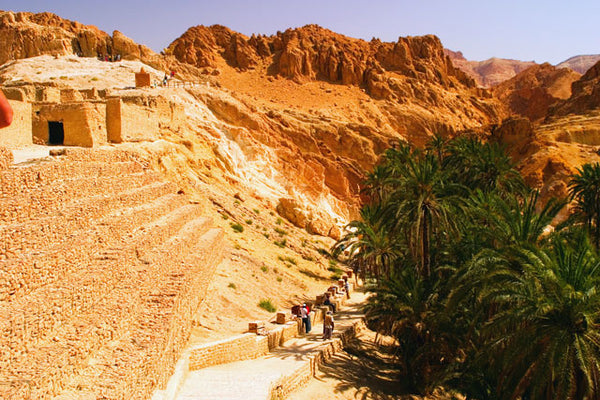
Among the great mariners of the 10th and 11th centuries A.D., Sulaiman al-Mahiri and Shahabuddin Ibn Majid occupy outstanding positions. They not only roamed about in the Indian, Pacific and Atlantic oceans, but also toiled around the African continent and probably even touched the shores of the New World. Sulaiman reached as far as the Behring Strait and has penned his valuable experiences in a number of books, of which Al-Umdat ae-Mahriya Ji Zabt-ieUlum-il-Bahriya is well -known. The other mariner Ibn Majid was considered among the four sea lions of his time. Allama Syed Sulaiman Nadvi in his book entitled The Navigation of Arabs has enumerated fifteen books written by Ibn Majid on Navigation. According to a Western critic, Ibn Majid is one of the earliest writers of nautical guides and his elaborate geographical account of the Red Sea could not be surpassed even up to the present day.
Ibn Faldan was a traveller of the 10th century A.D., who led an embassy sent by the Abbasid Caliph Al-Muqtadir Billah in 921 A.D. to the Bulgarian Monarch, and incorporated his experiences in Risalah which is one of the earliest regional accounts about Russia. During the eleventh century A.D., Abu Rehan Beruni, the celebrated thinker of Islam visited India, stayed there for a number of years, learnt the Sanskrit language and described the geography and the life of India in his memorable work Kitab-al-Hiplel. Regional geographics were also written during this period. Famous among them were the description of the Arabian Peninsula by Al-Hamdani and of India by Al-Beruni. The works of travellers like Ibn Jubayr, Al-Mazini and Ibn Batuta are store-houses of geographical knowledge. Al-Mazini (1080–1170 A.D.) who visited Russia wrote Tuhfat-al-balad.
The most brilliant writer of the period is Al-Idrisi (2101–54 A.D.) who was employed at the court of the Christian king of Sicily. His book Nuzhat-ul-Mushtag contained 70 maps. In the second abridged edition of Idrisi’s book one comes across eight instead of seven climates which were to be found south of the equator. The world map drawn by Idrisi is of the traditional round type and the first translation of his book was published in Rome in 1619 A.D.
Yaqut-al-Hamavi (1179–1229A.D.) compiled a big geographical dictionary named Mujam-al-Buldan which contains all geographical names in alphabetical order. It was published in 6 volumes in Leipzig (Germany) between 1666–73 A. D. Writing in the ‘Introduction to the History of Science; George Sarton remarks, “The Mujam al Buldan is one of the most important works of Arabic literature. It is a store house of information not simply on geography, but also on history, ethnography and natural history. It is preceded by an introduction dealing with mathematical, physical and political geography, the size of the earth, seven climates, etc.”‘
The Spanish traveller, Ibn Jubayr visited Mecca and Iraq in 1192 A. D. He wrote his well-known book of Travels entitled Rihlat-ul-Kinani which is a unique book of its type in Arabic literature.
Abu Abdulla Muhammad (1304–78 A.D.), better known as Ibn Batuta was the greatest Muslim traveller. Born in Tangiers, he started his travels at the age of 20, and returned home at the age of 51. During these 31 years he covered about 75,000 miles which is equal to three trips round the globe. No explorer or traveller during mediaeval times had traversed so many miles during a lifetime. Starting from Tangiers he toured Egypt, Abbysinia, Northern and Eastern Africa including Mombassa. He crossed the great Sahara (Desert) and reached Timbuktu. He describes an oasis in the Sahara (Desert) where people constructed houses of rock-salt roofed with camel skins. In Europe he visited Spain, the Eastern Roman Empire and Southern Russia and sailed in the Mediterranean and the Black Seas. There hardly was a Muslim country in Asia, which Ibn Batuta had not seen. He made many tours of the Arab countries and performed Haj (Holy pilgrimage to Mecca) four times. In addition he travelled in Persia, Turkistan, Afghanistan, India, Maldives, Ceylon, East India, Indo-China and China. According to him Aden was a great commercial centre in those days and had a good system of water-supply. He travelled as far North as Bolghar (54 degrees N) in Siberia, in order to see the shortness of summer nights and desired to travel into the land of darkness (extreme North of Russia), but abandoned his visit due to certain reasons. He stayed for eight years in India, as the State Qazi of Muhammad Tughlaq in Delhi, but had to flee to Deccan in order to save himself from the indignation of the Emperor. He took part in the conquest of Goa and visited Mal dives where he was made Qazi and married four wives. He relates interesting stories about India. Hindus in those days drowned themselves in the sacred waters of the Ganges in order to gain Baikunth (Paradise). On his first sight of Sati he was so overwhelmed with emotion that he almost fell off his horse. He met a very old man in the Hindukush Mountains, who was said to be 358 years old and got a new set of teeth after every 180 years.
Explorations and Discoveries
Muslims may claim due share in the exploration of vast oceans and the discoveries of far off lands. But the difficulty is that the achievements of Muslims in this sphere of human activity are not generally known to the world. The largest collection of literary and artistic treasures accumulated during the five centuries of the Islamic rule, perished at the time of the fall of Baghdad. The invaluable manuscripts were consumed to ashes by Hulagu Khan and his Mongol hordes. The cream of Muslim civilization met a similar fate in Spain, at the hands of Christian conquerors. Modern research has now begun to lift the veil from the face of mediaeval ages and the achievements of the Muslims now are revealed in all their glory.
“At a time when Europe firmly believed in the flatness of the Earth,” says Ameer Ali, “and was ready to burn any foolhardy person who thought otherwise, the Arabs taught geography by globes”. Their progress in mathematical geography was no less remarkable. The works of Ibn Hauqal, Makrizi Istakhri, Masudi, Beruni, Idrisi, Qazwini, Wardi and Abul Fida contain store of geographical knowledge specially on this branch of science, called by them “Rasnul Ard”.
Rotation of the Earth
The rotation and sphericity of the earth were discussed and proved by the Muslim geographers of medieval times. The Kitab Kalimat-ul-Ain deals with the rotation of the earth which causes day and night. Muslim astronomers also proved that the earth is a sphere and has a shape like a peach. Globes were commonly used in Arabic schools of medieval times which testifies to the contention of the sphericity of earth advanced by Muslims. Geography of the world was also taught with the help of globes in Moorish Spain.
Knowledge of Seas
Arab Mariners and explorers had a very wide knowledge of seas and oceans. The greatest discovery of the Arabs was that the oceans are connected with one another and form a compact oceanic world. The first sea route described by Sulaiman al-h-Mahiri started from the Indian Ocean and passing through the Pacific Ocean, Behring Sea, Arctic Ocean and Atlantic Oceans entered the Mediterranean Sea through the Straits of Gibraltar. The other route was easier. Starting from the Indian Ocean and passing through the Abbysinian Sea, Mozambique channel and encircling the Cape of Good Hope it entered’ the Atlantic Ocean. Passing through the Straits of Gibraltar it entered the Mediterranean Sea. This was the route used by Vasco De Gama in 1498 A. D. This shows that the Arabs were the masters of the seas and possessed maps of seas and oceans which they freely used in their voyages.
Ibn Khaldun has stated the length of the Red Sea, to be 1,400 miles, while according to current maps it is given as, 1,310 miles. This shows that the speculations of Arab geographers came very close to modern research.
Behring Strait
The Behring Sea and Strait was known to the Arabs. The route described by Sulaiman al-Mahiri went from the Pacific Ocean to the Arctic Ocean passing through the Behring Strait. The celebrated explorer Al-Masudi has also mentioned the Behring Sea in his works. Among the Arabs it was known as ‘Warang’ sea.
According to the Encyclopaedia of America, the geography of equatorial Africa and the issuing place of the river Nile was known to the Arabs for a very long time.
Arab Pilot of Vasco De Gama
In 1498 A. D. Vasco De Gama discovered a new route to India by passing through the Cape of Good Hope. Prince Henry of Portugal had established his nautical academy at Cape St. Vicent under the guidance of Arab and Jewish teachers which prepared the ground for the explorations of Vasco De Gama. It is now a well-known fact that an Arab had piloted his ship to India. Writing in Legacy of Islam, J. H. Kramers says, “when Vasco De Gama, after his circum-navigation of Africa in 11198, had reached Malindi on the East Coast of Africa, it was an Arab pilot that showed him the way to India. According to Portuguese sources, this pilot was in possession of a very good sea-map and of other maritime instruments. Arabic sources of that time also knew the story; they state that the Pilot, whom they knew under the name of Ahmad Ibn Majid, could only be induced to show the way to the Portuguese after having been made drunk”. Reporting from Bares, a Portuguese who was a member of the party of Vasco De Gama, writes in the Encyclopaedia of Islam: “When Vasco De Gama reached Malindi a Moor (Arab Muslim) called on him. Being much pleased in our company and with the idea of winning the favour of the king of Malindi who was in search of a pilot for the Portuguese ship, he (Arab Muslim) agreed to pilot our ship to India“. According to the earned author of the Encyclopaedia Britannica, a local hand had piloted the ship of Vasco De Gama to India. He is either shy of associating the name of a Muslim with the much-advertised exploration of Vasco De Gama or is ignorant of such a vital fact which may hardly be expected from an author who has undertaken such a gigantic work.
The discovery of-America
Modern research has proved beyond doubt that the Arabs discovered America. Muslim Geographers and astronomers believed in the sphericity of the earth. The trigonometrical tables of Khwarizmi were translated by Adelard of Bath, Gerard of Cremona and Roger Bacon. The famous book Image Mundi published in 1410 A. D. incorporated the Ain (or Arim) theory from the translations of Khwarizmi. It was from this book that Columbus learnt that the earth was pear shaped and that there must be some elevated part on the other side of the earth which he decided to discover. “Thus Islamic geographical theory”, observes J. H. Kramers, “may claim a share in the discovery of the new world”.
Modern research on the subject has gone a step further and has established that the Arabs discovered America five centuries before Columbus. The following important news was published in leading Indian newspapers including the Delhi Express, dated 11th August 1952.
“A leading South African anthropologist says the Arabs, not Christopher Columbus discovered America. The Arabs scored a beat of nearly 500 years on Columbus, according to Dr. Jeffreys, Senior lecturer of Social Anthropology at Witwatersand University. Dr. Jeffreys based his claim on a discovery 18 months ago of Negro Hamitic skulls in the Rio, Grande River.” The professor said, ‘Puzzling things previously inexplicable suddenly made sense and fitted a jigsaw puzzle’ .
“Dr. Jeffreys thinks that by 1000 A. D. Arabs already commanded the Mediterranean, were established on the West coast of Africa and had settled in America. Columbus, too, found small colonies of Negroes in the Darian Isthumus who, according to Dr. Jeffreys, were descendants of Arab slaves.” “He said the discovery of Hamitic skulls in caves in Bashama Islands and African root crops in the Caribbean lend credence to this theory.”
The celebrated anthropologist of South Africa, Prof M. D. W. Jeffreys’ article has been published in various journals of the world in which he has given weighty proofs that Arabs had discovered America and had settled in Caribbean islands long before the arrival of Columbus. He says, “There is an old Portuguese tradition that when the Portuguese were exploring the coasts of Guinea (West Africa) under King John II, who died in 1495, these explorers brought maize, an American plant from Guinea to Portugal…. As maize must have reached Guinea from America to introduce it to Portugal before Columbus sailed from Spain, it is clear someone must have brought it from the Americas, and I claim it were the Arabs who did so”.
In the same way banana was carried by Arabs to Caribbean islands and American mainland. Peter Nartyr, a friend of Columbus, published his first Decade before 1504 A.D. In it he describes the banana as it appeared in the West Indies when the Spaniards arrived. He writes: “it (banana) was brought from a part of Ethiopia called Guinea, where it grows wild, as in its native country.” It was the Arabs who introduced the banana to Guinea (West Africa) and there from carried it to Caribbean islands and American mainland. Reynold writes: “The Arabs were instrumental in distributing the banana across equatorial Africa, so that it was well-established on the Guinea coast when the Portuguese first explored there in the years 1469-1474 A.D.”
Moreover the Atlantic islands were known long before the discovery of Columbus. The Arabic names of these islands in the geography published by a Franciscan Friar in 1350 A.D. prove that most of these were inhabited by Arabs and their descendents, e.g. Lost Islands were named Kalidat, Teneriffe was named Elburd. The word Brazil too has Arabic origin. Armando Cortesao, formerly counsellor for the History of Science at UNESCO has published a book called The Nautical Chart of 1424, in which he has named several islands which have Arabic origin e.g. Antilia, Saya and Ymana.
The celebrated Geographer Idrisi had published his well-known geography Nuzhat-al-Mushtaq about 1151 A.D. Idrisi in his geography gives a hint that the Arabs knew the Americas. The Western Orientalist Glas, writing in 1764 A.D. of Idrisi, whom he -calls the Nubian geographer admits: “Anyone who reads with attention the first part of the Nubian Geographer’s Third Climate will be strongly inclined to believe that the Arabs had even some knowledge of America or West India Islands.
Copied from ‘THE ISLAMIC SCHOLAR’, to purchase the CD ROM please go to:
http://www.parexcellence.co.za/
Leave a comment
Also in SCIENCE & MEDICINE
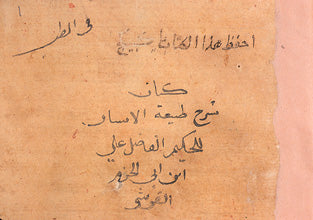
Revolution by the Ream
Paper, one of the most ubiquitous materials in modern life, was invented in China more than 2000 years ago. Nearly a millennium passed, however, before Europeans first used it, and they only began to manufacture it in the 11th and 12th centuries, after Muslims had established the first paper mills in Spain. The German Ulman Stromer, who had seen paper mills in Italy, built the first one north of the Alps at Nuremberg in the late 14th century.
The cultural revolution begun by Johann Gutenberg's printing press in 15th-century Mainz could not have taken place without paper mills like Stromer's, for even the earliest printing presses produced books at many times the speed of hand copyists, and had to be fed with reams and reams of paper. Our demand for paper has never been satisfied since, for we constantly develop new uses for this versatile material and new sources for the fiber from which it is made. Even today, despite the computer's promise to provide us with "paperless offices," we all use more paper than ever before, not only for communication but also for wrapping, filtering, construction and hundreds of other purposes.
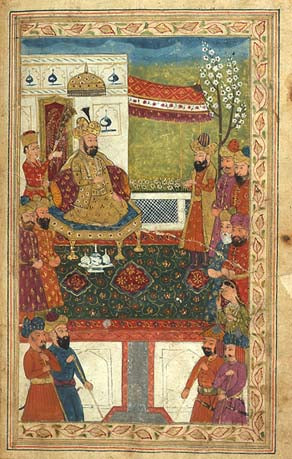
Scientific Inventions by Muslims
Inventions
Abul Hasan is distinguished as the inventor of the Telescope, which he described to be a Tube, to the extremities of which were attached diopters”.
